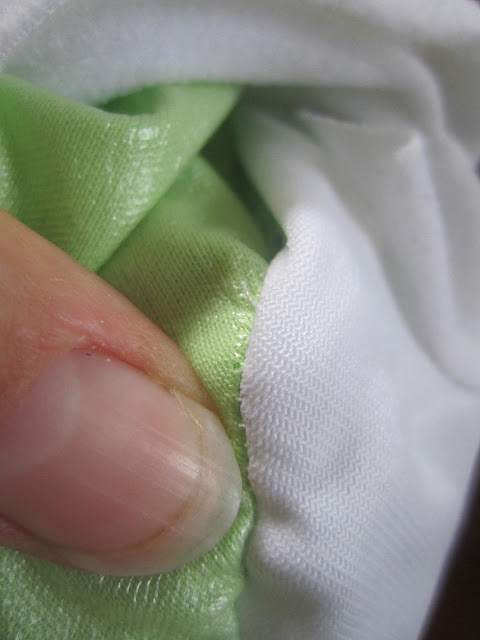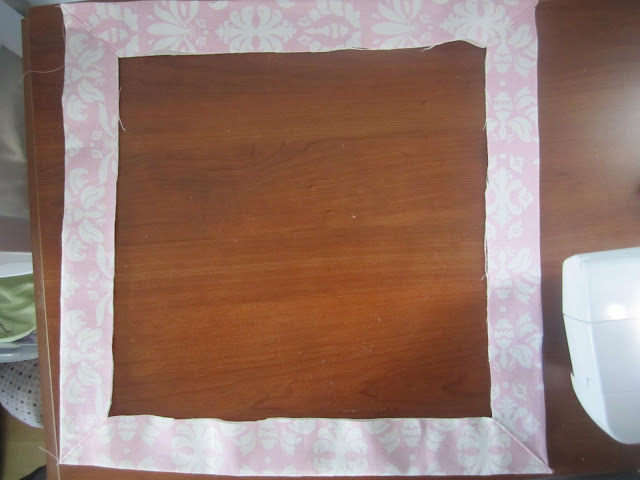Hello Everyone! Today I will be showing you how to repair BumGenius pocket diapers. My friend sent me a dozen diapers that her son wore through potty training and she wants to use for her daughter now. Obviously after 2 years of use the elastic isn't so stretchy and the aplix isn't so sticky. But BumGenius sells these little refresher kits with new aplix and elastic for its users to repair their own diapers. They are only $1 so unless you already have the elastic and aplix on hand you may as well just buy the kit and save the time... you really wont save much money by buying a whole roll of elastic and aplix.
 These kits come with 3 pieces of elastic (2 leg gussets, 1 for the back they are all the same length about 4.5in) 2 hook tabs, 2 loop tabs, 2 laundry tabs and instructions. These kits DO NOT come with new aplix for the front of the diaper so if your diaper needs that, these kits wont have everything you need.
These kits come with 3 pieces of elastic (2 leg gussets, 1 for the back they are all the same length about 4.5in) 2 hook tabs, 2 loop tabs, 2 laundry tabs and instructions. These kits DO NOT come with new aplix for the front of the diaper so if your diaper needs that, these kits wont have everything you need. You will also need:
Seam Ripper
sewing machine
safety pins (at least 2)
embroidery floss or all purpose thread and a needle
First remove all the aplix that you will be replacing, using your seam ripper... taking care that you do not rip the PUL or suede cloth. Then you can open the inner seams to get to the elastic.
 |
| new elastic on top, old stretched out elastic on the bottom stretched out elastic will allow for leaking of your diapers, hence why we replace the elastic! |
The hardest part of these repairs is replacing the elastic but I assure you there is an easy way! After fiddling with wire hangers, safety pins, chopsticks and anything I could get my hands on I found a better way! The directions that come with the kits say to use a safety pin for guiding the new elastic through the elastic channel but 1. this is a huge pain and 2. you could damage the PUL this way.
Instead, I found that after I exposed the ends of the old elastic by ripping the seams on either end if I just pinned the new elastic to the old elastic I could use the old elastic to pull the new elastic through the channel very easily!
 |
| closed seam near the end of leg elastic |
After pinning the new elastic to the seam allowance where the old elastic is I stitched the other end of the new elastic to the old elastic using embroidery floss. Nothing fancy here, just a simple double knot to secure the new elastic to the old elastic.
After you cut the old elastic you can go to the other side of the elastic channel and pull it through!
After you pull the elastic through to the other side and pin it, you are ready to sew! You can replace the safety pin with a straight pin or you can just hold it securely in your hand. I usually just hold it tightly as I sew. Keep in mind you are only sewing the elastic to the seam allowance, not to the PUL or suede cloth.
After you sew both ends of elastic to the seam allowance you can flip the diaper and close the seam allowance seam (what you opened with the seam ripper when you exposed the elastic)by just stitching over the old seam of the leg gusset.
After all the elastic is in (hard part done!) you can sew on the new aplix. This is really simple to do, not much explanation here. Keep in mind the hook part of the hook and loop should be facing inward, loop faces outward. The directions on the refresher kit say to leave the old laundry tab on and sew the new one over it. The new laundry tabs are a bit bigger than the old ones so this is easy to do but if you want to you can remove the old ones anyway... it doesn't matter. Make sure you go over all these seams at least twice.
Once the new hook and loop and elastic is on, you are done! Tada!! For only $1 and maybe 20 minutes (less time once you do it a few times and get in the groove) you have a nice fresh diaper! Here's a picture of a refreshed diaper and a not refreshed. The refreshed diaper is on the left.
I hope reading and watching helped you in some way. Cloth diapers are an investment! We dont spend $20 a diaper to throw them away 2 years later! They really are not hard to repair and refresh. I will be repairing my Flip diaper covers in a couple days so I will blog that also for those of you with Flips!




































